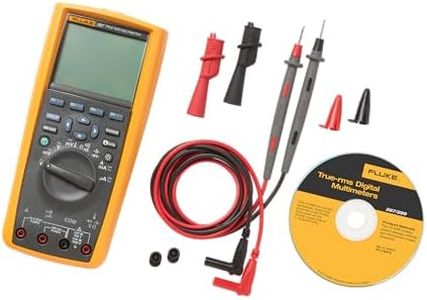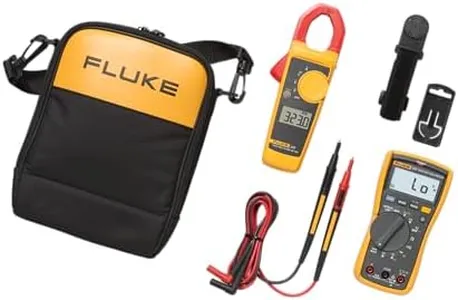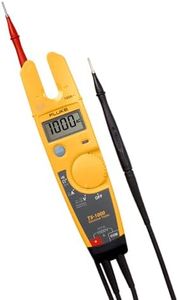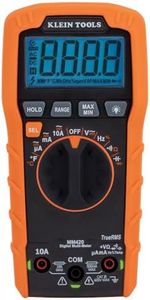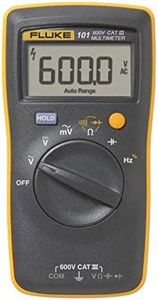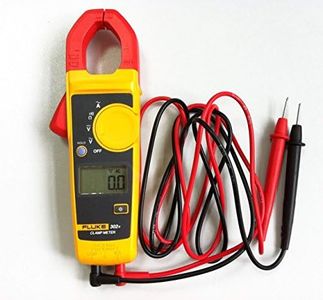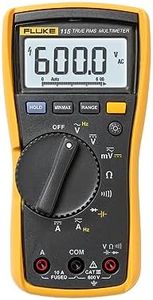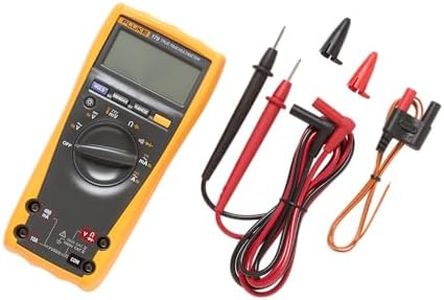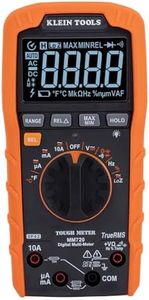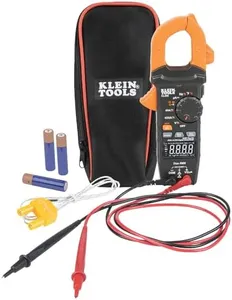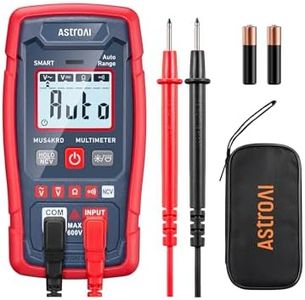We Use CookiesWe use cookies to enhance the security, performance,
functionality and for analytical and promotional activities. By continuing to browse this site you
are agreeing to our privacy policy
10 Best Automotive Multimeters
From leading brands and best sellers available on the web.Buying Guide for the Best Automotive Multimeters
Choosing the right automotive multimeter is all about finding a tool that matches your level of experience and meets the needs of the types of vehicles and electrical work you do. Multimeters are essential for diagnosing electrical problems in cars, checking batteries, and ensuring your car’s electronics are running smoothly. It’s important to understand the different features and specifications so you can select a device that will be both useful and easy for you to use.Measurement Types (AC/DC Voltage, Current, Resistance, Continuity)Measurement types tell you what kinds of electrical signals the multimeter can test. You’ll typically need to measure voltage (both AC and DC), current, resistance, and sometimes continuity (to check if a circuit is complete). More features are helpful if you work on different kinds of vehicles or electrical systems. If your primary work is basic diagnostics, just focusing on voltage, continuity, and resistance may be enough; but for advanced troubleshooting or working on modern vehicles, broader capabilities can be very beneficial.
Range and AccuracyThe range refers to the highest and lowest values the multimeter can measure; accuracy is how close readings are to the actual value. For automotive use, you’ll often work with 12V DC circuits and relatively low currents. Look for a range that covers your typical needs but also has the flexibility for higher voltages (like hybrid or electric vehicles). High accuracy is important if you’re working on sensitive electronics, while standard accuracy is fine for general car maintenance and troubleshooting.
Auto-ranging vs. Manual-rangingAuto-ranging means the multimeter selects the best scale for you, which is very handy and reduces the chance of error. Manual-ranging means you have to pick the scale yourself, which may be preferable for experienced users who like more control. If you’re newer to using multimeters or value ease of use, auto-ranging is usually the better choice. Manual-ranging models can be a good pick if you often work with the same types of measurements and want faster readings.
Display Type and ReadabilityThe display is where you read your measurements. A clear, backlit display is crucial for automotive work, especially in low light or tight spaces under the hood. Larger screens with big digits are easier to read, particularly if you’re working quickly or your eyesight isn’t perfect. Choose a multimeter with a display that’s comfortable for you to use in your typical work conditions.
Durability and Safety RatingsAutomotive environments can be tough, so it’s important your multimeter is durable and has good safety ratings. Look for features like protective rubber casing, water and dust resistance, and high CAT (Category) safety ratings, which show the tool can handle high-energy loads safely. If you’ll work outdoors or in tough conditions, pick a more rugged model; for use in home garages or controlled settings, basic durability may be enough.
Additional Features (Temperature measurement, Diode Test, Data Hold)Bonus features like temperature measurement, diode testing, and data hold add extra convenience. Temperature measurement helps with diagnosing engine problems, diode test is useful for alternators or sensors, and data hold lets you freeze readings to check them after moving the probes. Decide which extra functions fit your common automotive tasks; if you do a lot of engine work, temperature might be essential, while simple diagnostics might only require standard functions.
Size and PortabilitySize and portability matter if you need to carry your multimeter between jobs, or use it in tight spaces around a car. Compact models can be easier to handle and store but may have smaller displays or fewer features. If you mostly work at one site and need a larger screen or extra options, a bigger unit could be worth the extra bulk.

